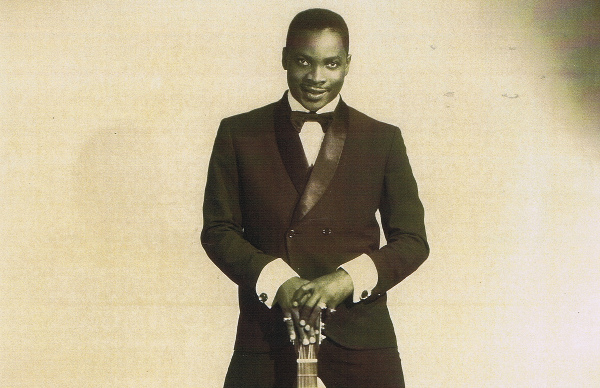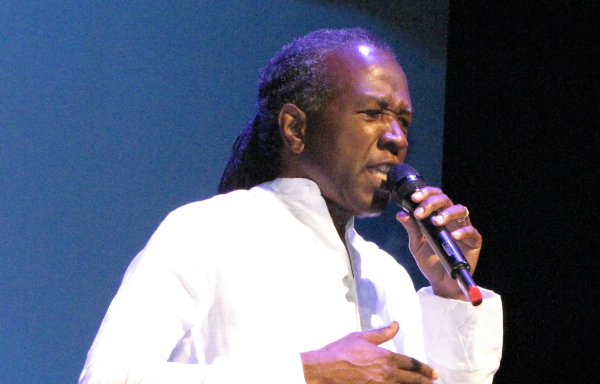De lizard run up she foot,
An’ it disappear.
Everybody still searchin’ everywhere.
Wey de lizard, Teacher Mildred?
…. …. …. ….
De way she jolly an’ happy
Ah sure de lizard must be ticklin’ she.

There are many directors, screenwriters, DOPs, storyboard artists and cutting room assistants who would doubtless be delighted to apply their know-how to the immense suggestive power of the chorus of Sparrow’s immortal 1969 ditty.
Before that chorus comes this opening verse, much more wide-angled in focus:
Playin’ in de class
Wid a lizard in a glass
De lizard get away from Ruth
An’ run by de teacher foot.
Oh Lord, de children’ frighten
Wond’rin’ wha’ go happen
Buh de teacher laughin’ out kee-kee-kee
Only watchin’ everybody.

It situates us at the departure point for deployment of the narrative mechanisms inherent in certain storytelling genres.
Since Aristotle wrote his Poetics many moons ago, storytellers have wrestled unceasingly with the essentials that are key to narrative efficiency. Coming into play are the audience, the means available to the medium and the traditions to be upheld within the medium and the genre.
Since the appearance of Poetics, much water has flowed under the bridge. Over time, the mechanisms of storytelling—through theatre, opera, circus, pantomime, medieval troubadours, calypsonians—have, inevitably and necessarily, undergone alterations.
Towards the end of the XIX century, 1896 to be precise, the Brothers Lumière discovered how cameras could be used to render ‘moving pictures’. The cinema was born and the world, the perception of reality, has never been the same since.
Film directors have shown how the weight of colour, the way they ‘move’ their cameras and construct their frames, can shape the stories they set out to tell.

(Copyright Philippe Halsman/Magnum Photos)
In their own way, calypsonians also ‘move’ their cameras and use colour in telling their stories. As Alfred Hitchcock, that maestro of suspense, never tired of insisting: the three things most important to storytelling are ‘the story, the story and the story’.
Whatever the genre—crime thriller, romantic comedy, heist, action/adventure, western, dramedy, sci-fi—film narrative adheres to the same basic tenets: back story presentation, trigger point, first movement, second swing, final twist, dénouement/resolution, epilogue (aftermath). Ditto calypso.
Calypso, though, is a very diverse, all-encompassing art-form. Not all calypsoes ‘tell stories’. Not all calypsoes adhere to rigid Aristotelian narrative mechanisms.
But there is a very large body of compositions which do, which skilfully narrate events anchored in a concrete, identifiable setting.
With main and secondary characters and with atmosphere, cultural references and audience implication and participation. With beginning, middle and end and with twists, double-twists and final resolution.

More simply put, calypsoes that have a back-story, a beginning phase, a development/complication phase and a dénouement.
A distinction is to be made between calypsoes driven by what may be called an ‘action idea’ and calypsoes formulated around debate, political and social commentary, etc. The tapestry of the former allows us to draw interesting parallels with the mechanisms of film narrative.
For calypso lovers of my age and generation, Sparrow is the towering reference. For many film-buffs of a certain age and generation, Hitchcock was, in many ways, the Seventh Art figure of reference par excellence.
A closer look at some of the outstanding works of Dr Bird and the director of The Birds leads us into most interesting territory within both media.
Paramount for Sir Alfred are camera sashays, framing and the appropriate use of colour to establish mood and atmosphere in keeping with what is demanded block by block. So too in calypso.
Hitchcock was a master of using his frames to ‘lock’ his characters into their dilemmas, The Wrong Man (1956) being perhaps the most illustrative example.

A parallel in the calypso world is King Solomon’s ‘Santa’, which locks characters into ineluctable reality thus: ‘Santa take a big man from St James / an’ tie him like a cow in Morvant / Sun an’ rain wettin’ de man /an’ he cyah get away, poor fella’.
Kitchener’s ‘Curfew’, Cristo’s ‘Parrot an’ de Dumb Boy’, Poody’s ‘Tip-Toe Tip-Toe’, Funny’s ‘Farmer Brown’ also spring to mind as colourful examples of craftily deployed film narrative rigidity.
To capture the unwholesome climate of the worlds they depict, usually hostage to crime and lawlessness, so many film noir directors lovingly embrace the light-and-shade aesthetic. Clint Eastwood is a master at delineating the ‘two-faced’ hero, the difficult-to-define type, draped in bales of light that cut the face in half, one side in disconcertingly bright tinctures, the other in ominous shade.
Light is used to convey the ambiguity and contradiction of characters torn between the desire to do good and their immense capacity for doing extreme evil.
In this regard, Eastwood’s 1992 western, Unforgiven, is a stand-out work. Who can forget the Eastwood (Will Munny) vs Gene Hackman (Sheriff ‘Little Bill’ Daggett) showdown at the end?

The world of film has never been short of directors who use their camera as a tool of ‘dismemberment’. Calypsonians have also been adept at using the tools of their craft to depict dismemberment, physical and metaphorical.
How often are we reduced to being a part of what we really are or can be? How often does reality escape our grip and turn us into wanton parts of a whole, instead of salubrious units?
Heads, faces, half a body, anatomy parts as a defining reality. In cowboy films, we see repeated focus on holsters, guns, triggers, spurs, etc.
‘Impacting dismemberment’ is an aesthetic employed to bring to the screen one of the major dilemmas of life: our struggle to define ourselves as whole beings rather than a compendium of disconnected parts dealing with the business of existing in often tragic circumstances.
‘Impacting dismemberment’ is also an aesthetic not foreign to the world of calypso. Baron’s ‘Severe Licking’ (1971) is a poignant example, which I shall explore in greater detail later on.

Beyond all of the above hovers the capital notion of the appraisal of reality itself. So much more can be done with a camera. Apart from dexterous sashays and careful framing, filters can be used to ‘doctor’ and ‘taint’—to place an imprint on what is being portrayed.
Reality is fickle and relative, there being potentially as many versions of it as there are people. Using different types of lenses and filters, cineastes hold reality up to audiences, inviting questioning, reversal, redefinition.
The calypso world is also full of works that revolve around ‘filtered’ reality, metaphorical dismemberment and reality redefinition.
Add to ‘Severe Licking’ Dr Bird’s ‘Lion Donkey Rematch’ (1974), which, in this regard, also merits greater scrutiny.
 Wired868 Wired868 for smart sport news and opinion
Wired868 Wired868 for smart sport news and opinion









